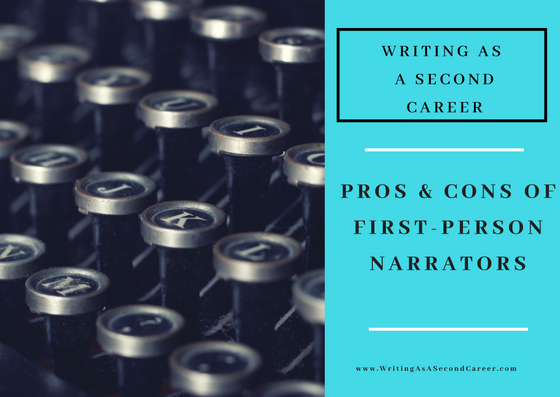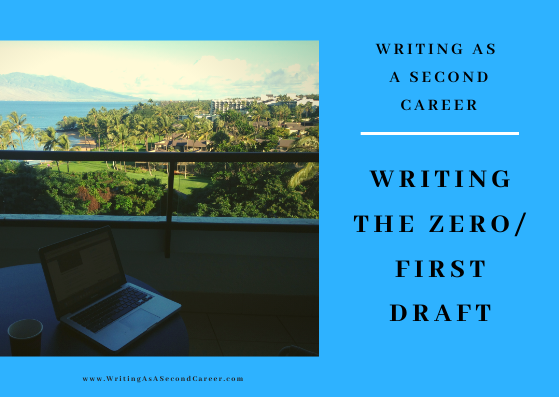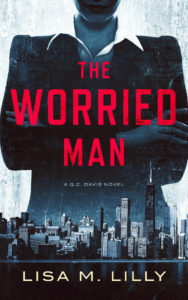Writing in first person can be both fun and extremely challenging.
The reader sees directly through the eyes of a single character, usually the protagonist. But there are drawbacks too.
Point Of View Options
You probably remember the differences between third, second, and first person from your high school literature class. Third person POV uses the pronouns “she” or “he” rather than “you” or “I” when telling the story:
John rushed into the room, afraid he’d make a poor first impression by being late.
 Second person POV, which is rarely used in fiction, uses the pronoun “you,” as if you were writing about the reader as a character in the novel:
Second person POV, which is rarely used in fiction, uses the pronoun “you,” as if you were writing about the reader as a character in the novel:
You rushed into the room, afraid you’d make a poor first impression by being late.
First person POV uses the pronoun “I”:
I rushed into the room, afraid I’d make a poor first impression by being late.
Drawbacks Of First Person POV
-
The Bomb Under The Table
If you write your novel in first person, it can’t include anything that the narrator doesn’t know.
That means if your narrator doesn’t know there’s a bomb under the table, you can’t tell the reader the bomb is there.
This limitation robs the author of a means of suspense. The reader who knows about the bomb worries for the unsuspecting narrator sitting at the table. That reader will remain engaged even if the conversation is less exciting or positively mundane (not that you should aim for dull dialogue).
-
What Are They Thinking/Subplot Scarcity
You also can’t directly state what any character other than the narrator is thinking or feeling. Your narrator can guess, as can the reader, based on other characters’ actions, facial expressions, or body language, but that’s all.
Further, the reader only knows what other characters do in the narrator’s presence or as told to the narrator.
Because you can’t get into the heads of other characters or see what they do outside the narrator’s knowledge, it’s more challenging to round out those characters and develop subplots about them.
I’ve been struggling with this after switching to first person in my new series after writing thrillers from multiple points of view. Nearly half of each of the second and fourth books in my Awakening series are devoted to subplots regarding other characters.
Book 2 deals in depth with protagonist Tara’s dad’s conflict between his deep religious faith and the challenge his non-believing daughter’s virgin pregnancy presents to it. Book 4 includes the struggles of a key figure in The Brotherhood of Andrew–the religious order that believes Tara will trigger an Apocalypse–to resolve his loyalty to the order given what he’s learned about Tara and his growing relationship with someone on her team.
Had either book been written in the first person I could have alluded to those conflicts only if Tara knew about them, and I couldn’t have made them key parts of the books.
-
Narrator Love/Hate
If your narrator’s way of speaking or personality rubs a reader the wrong way that reader will almost certainly dislike the book.
It’s like sitting in a room with someone who really gets on your nerves. That person might have valuable things to tell you, but it’ll take tremendous effort to get past the speaker’s manner and listen.
I discovered this point firsthand with a multi-paragraph review of The Worried Man where the reader disliked my first-person narrator. Other reviewers loved Q.C., and I’ve already had readers email to ask when the next book about her will be out. But the reader who disliked her pretty much disliked everything about her, which undermined any appreciation of book as a whole.
So why use first person narration at all?
Reasons To Write In First Person
-
Hold Me Close
First person creates greater intimacy between the narrator and the reader and between you and your narrator.
To write in first person, you need to immerse yourself in your narrator’s life, emotions, voice, and thoughts. You may come to know your narrator better than you know yourself.
The reader in turn hears firsthand the narrator’s thoughts and experiences. The narrator shares directly with the reader physical sensations, smells, sounds, tastes, and emotions.
If the reader enjoys the narrator’s voice and perspective, it’s like hanging out with a friend. Especially one who tells great stories.
Because of that, the reader also is likely to come back for book after book.
As I wrote about in Why I Love V.I. on my author blog, I read every one of Sara Paretsky’s V.I. Warshawski private eye novels as soon as they come out because I want to hang out with V.I. again. The plot is secondary to me.
More recently, I read all six of Jana DeLeon’s Shaye Archer series within two months for the same reason.
-
Mechanically Speaking
First person is the simplest point of view to write from a nuts and bolts perspective.
That’s so because there are fewer decisions to make. You know from whose point of view each scene will be told from page one: your narrator’s. You also know exactly what you can and can’t share with the reader: only what the narrator knows.
-
Creativity Abounds
The limits first-person narration presents can spark creativity and heighten your writing skills.
For example, because you can’t have a supporting character share thoughts, feelings, and backstory directly with the reader you need to find other ways to do so.
Some options include:
- Conflict between the narrator and supporting character that reveals that character’s emotions or personal story
- Letters, emails, social media posts, or other types of written communication from the supporting character that the narrator discovers or receives
- Gestures, facial expressions, and actions of the supporting character that show thoughts and feelings
You can and likely will use all these options and others to some extent no matter what point of view you use.
But first person requires you to try out those options rather than putting the reader in the supporting character’s head. It pushes you to expand your toolbox.
That’s all for this week.
Until next Friday, when I’ll talk about the rarely-used-in-fiction second-person point of view—
L.M. Lilly
P.S. For more on which character’s point of view to use for each scene, you may want to check out Learning About Point Of View From Donald Trump And James Comey.




 At a Sell More Books Show Summit I attended author Rachael Herron used a term I hadn’t heard before: the zero draft.
At a Sell More Books Show Summit I attended author Rachael Herron used a term I hadn’t heard before: the zero draft.







 For me, it really doesn’t matter if I love the music or not. It just matters that I’m there, listening and experiencing and watching.
For me, it really doesn’t matter if I love the music or not. It just matters that I’m there, listening and experiencing and watching.
 The rule of keeping it simple applies to other types of writing too.
The rule of keeping it simple applies to other types of writing too. Your protagonist is going along with normal life as a waitress, a student, a Southern Belle and, bam, something changes.
Your protagonist is going along with normal life as a waitress, a student, a Southern Belle and, bam, something changes.




